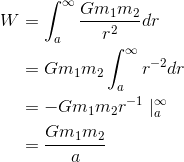Another type of improper integral is one in which one of the limits of integration is infinite. The notation

means the limit of  , where H is made
to grow bigger and bigger. Alternatively, we can think of it as an integral in which the top end of the interval of integration is an infinite hyper real number. A similar interpretation
applies when the lower limit is −∞, or when both limits are infinite.
, where H is made
to grow bigger and bigger. Alternatively, we can think of it as an integral in which the top end of the interval of integration is an infinite hyper real number. A similar interpretation
applies when the lower limit is −∞, or when both limits are infinite.
Example 77
Evaluate


As H gets bigger and bigger, the result gets closer and closer to 1, so the result of the improper integral is 1.
Note that this is the same graph as in example 75, but with the xand y axes interchanged; this shows that the two different types of improper integrals really aren’t so
different.
c / The integral  is finite.
is finite.
Example 78
Newton’s law of gravity states that the gravitational force between two objects is given by  , where G is a constant,
, where G is a constant,  and
and  are the objects’ masses, and r is the center-to-center distance between them. Compute the work that must be done to
take an object from the earth’s surface, at r = a, and remove it to r= ∞.
are the objects’ masses, and r is the center-to-center distance between them. Compute the work that must be done to
take an object from the earth’s surface, at r = a, and remove it to r= ∞.

The answer is inversely proportional to a. In other words, if we were able to start from higher up, less work would have to be done.
- 2929 reads






